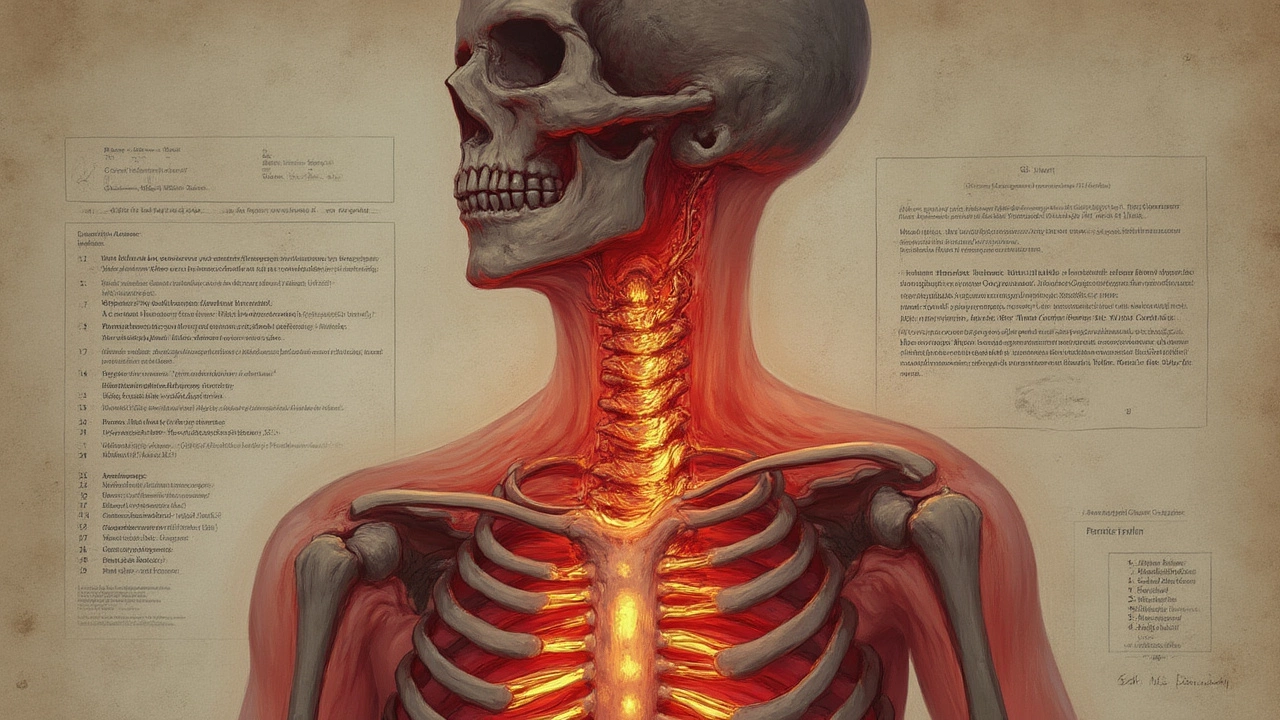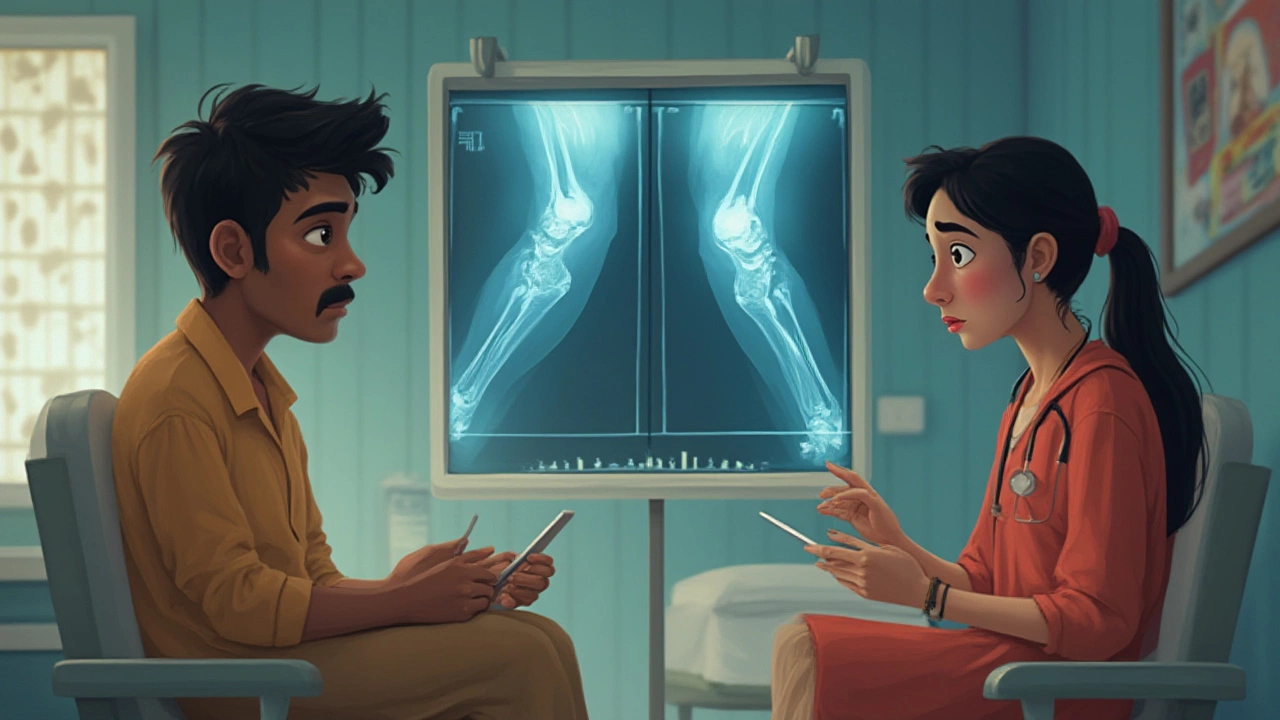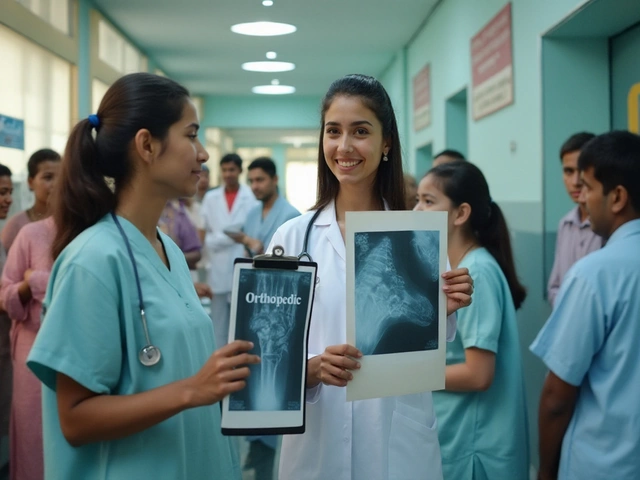
If you imagine the human body as a building, bones are its steel beams. They’re tough, reliable, and built to last. But what if I told you there’s one bone in your body that, if broken, may never truly heal? It sounds like the setup to a horror story, but it’s real—and the answer is tucked inside your head. While most bones are impressively good at patching themselves up, there’s one notorious exception that keeps doctors scratching their heads: the human jaw’s temporomandibular joint (TMJ) disk. But wait, that’s cartilage, not bone. Concerning actual bones, it’s the “sesamoid bone in the thumb (the radial sesamoid)” and more famously, the “human rib” that have this reputation—the first for its stubborn non-healing and the second for being tricky but not impossible. Different experts highlight different bones, but the myth of the ‘bone that never heals’ is usually pinned on the tiny sesamoid bone in the hand.
The Urban Legend of the Bone That Never Heals
Ask around and you’ll find different answers about which bone ‘never’ heals. Some say it’s the ribs, others name the femoral neck, but the top candidate by far is the sesamoid bone in the thumb. What makes this even more interesting is how common thumb injuries are. You use your hands for just about everything—typing, texting, opening jars—and each thumb is home to two sesamoid bones: tiny nodules embedded in your tendons. If you break one, your body often acts like it never happened and simply ignores the injury. Instead of forming new bone, the fracture site stays a weak point. If you play sports like basketball or tennis, that’s a problem—the sesamoid doesn’t get much blood, so nutrients for healing barely reach it.
The problem isn’t just blood flow. The thumb sesamoid works a lot like the kneecap, acting as a pulley for tendons. But unlike the kneecap, it’s much smaller and under enormous pressure each time you grip or pinch something. This constant use means it rarely gets the rest required for healing—it gets reinjured before it has a chance to recover. Doctors often see persistent pain, swelling, and weakness that never fully disappears. MRI scans can show a non-union, meaning the fracture edges never fully knit back together. This doesn’t mean every broken sesamoid bone is doomed, but most don’t heal the way, say, a broken arm does.
Why does this myth about unhealing bones persist? It’s partly because the sesamoid fracture is rare but unforgettable in the medical community. Patients may recall an injury for years, coming back to the doctor with lingering pain that never goes away. Sometimes, doctors remove the stubborn bone, and people still live normal lives, but with a bit less grip strength. Fun fact: horses and dogs often have problems with their sesamoid bones too! Veterinarians know all about these ‘troublemaker’ bones.
How Most Bones Heal and Why This One Doesn’t
Here’s what makes the rest of your skeleton a little more accommodating. Your bones might seem like hard, lifeless sticks, but they’re alive—full of cells, nerves, and blood vessels. When you break a bone, your body goes into repair mode. Right after the break, blood rushes in, forming a clot. This becomes a kind of biological scaffolding. Specialized bone cells, called osteoblasts, arrive and lay down new material. Over weeks and months, that material matures and hardens, restoring the bone’s strength and structure.
For most bones, this process works beautifully, especially in children or young adults. But everything depends on a steady supply of blood and the ability to keep the injured area still. With the sesamoid bone in your thumb, you’re fighting an uphill battle. Blood flow is naturally weak, and since your thumb is constantly moving, the bone doesn’t get a break—to use a pun. Studies from the Journal of Hand Surgery show non-union rates as high as 60% in thumb sesamoid fractures. That’s even worse than the dreaded scaphoid bone, the second-most troublesome bone in your wrist.
Contrast that with broken ribs. Yes, ribs are notorious for healing slowly, due to their constant movement as you breathe. But with enough rest, most rib fractures do heal, even if a lump or ache remains. Bone healing works best when broken ends meet up and stay still, called immobilization. If you can achieve that—think casts and slings—healing usually follows. When you can’t, the bone may heal poorly, leading to non-union or a ‘false joint’ (pseudoarthrosis). So, while other bones might struggle, only certain ones flat-out refuse to repair, and among them, the sesamoid is the top pick.

Fascinating Bone Healing Facts and What the Data Says
Humans aren’t the only species with healing issues. In fact, bone healing is part biology, part engineering, and a little bit of luck. The kind of bone, its shape, location, and blood supply all decide if an injury mends or lingers. For the medically curious, here’s a look at how different bones measure up. An eye-opening study from 2017 in Clinical Orthopaedics and Related Research found that overall delayed bone healing (meaning it takes longer than expected) happens in about 5-10% of fractures. But for sesamoid injuries, that risk jumps way higher.
| Bone | Time to Heal (average) | Chance of Non-Union |
|---|---|---|
| Humerus (upper arm) | 6-12 weeks | 5-8% |
| Tibia (shinbone) | 10-16 weeks | 7-10% |
| Scaphoid (wrist) | 8-14 weeks | 30-50% |
| Sesamoid (thumb) | 16+ weeks | Up to 60% |
| Rib | 4-6 weeks | Rare |
It’s wild to realize how much your bones depend on supplies most people take for granted—oxygen, nutrients, and rest. Age, nutrition, activity, and even genetics play a part. Smoking, for example, cuts blood flow and can double your risk of non-union. Fun tip: getting enough vitamin D and calcium, and steering clear of nicotine, gives your body a much better shot at solid repair. Weight-bearing bones (like your femur) heal well if you can avoid putting stress on them. But small bones, working hard in tight spaces, typically get little downtime, making healing slow or impossible.
Don’t underestimate mental health, either. Studies from the British Journal of Sports Medicine highlight that patients who believe their bone will heal are more likely to experience faster, better recovery. So, hope isn’t just fluff—it rewires your expectations and motivation, nudging you to follow your doctor’s advice and stay active, without overdoing it.
Can Anything Be Done for Bones That Refuse to Heal?
If you’ve hurt your thumb and the pain drags on for months, it’s worth getting checked. Doctors have some tricks up their sleeves. Sometimes, immobilizing the joint deeply, with a splint or cast for six weeks or more, helps the stubborn sesamoid heal. If that fails, treatment may shift to surgery, which removes some or all of the non-healing bone or even tries bone grafts. People worry—will removing that bone leave their hands useless? Usually not: you might lose a bit of fine pinch and power grip, but most people adapt quickly. Still, protection is better than treatment. Wearing proper gear during sports and learning ergonomic typing can help avoid these pesky injuries.
Is prevention possible? For athletes and manual workers, definitely. Warm up your hands, take breaks, and steer clear of repetitive, high-stress motions. If your job or hobby puts your thumbs at risk, use padding or taping for support. And don’t hesitate to listen to your body—pain is a warning, not a suggestion. As a pro tip, icing stubborn thumb pain after activities (not just heat) can calm swelling and keep you in the game.
Here’s a short list for anyone dealing with a hard-to-heal bone:
- Keep the joint as still as possible early on—splints help.
- Ask your doctor about nutritional support, especially vitamin D.
- Avoid activities that reinjure the area—patience is key.
- Follow up—imaging tests can spot progress or the lack of it.
- If pain lingers, consider a specialist, preferably an orthopedic hand surgeon.
Alternative therapies, like ultrasound or electromagnetic fields, have mixed results, but can be worth trying if your case is persistent.
The takeaway? While most bones can and do heal—even after major trauma—some, like your thumb’s sesamoid, seem designed to test our patience. That’s why, despite all our medical advances in 2025, this tiny bone is still the subject of so many whispers and warnings. If you ever get the misfortune of injuring yours, rest up, trust the process, and be persistent—sometimes healing is as much about mindset as medicine.





Rohan Talvani
I am a manufacturing expert with over 15 years of experience in streamlining production processes and enhancing operational efficiency. My work often takes me into the technical nitty-gritty of production, but I have a keen interest in writing about medicine in India—an intersection of tradition and modern practices that captivates me. I strive to incorporate innovative approaches in everything I do, whether in my professional role or as an author. My passion for writing about health topics stems from a strong belief in knowledge sharing and its potential to bring about positive changes.
view all postsWrite a comment